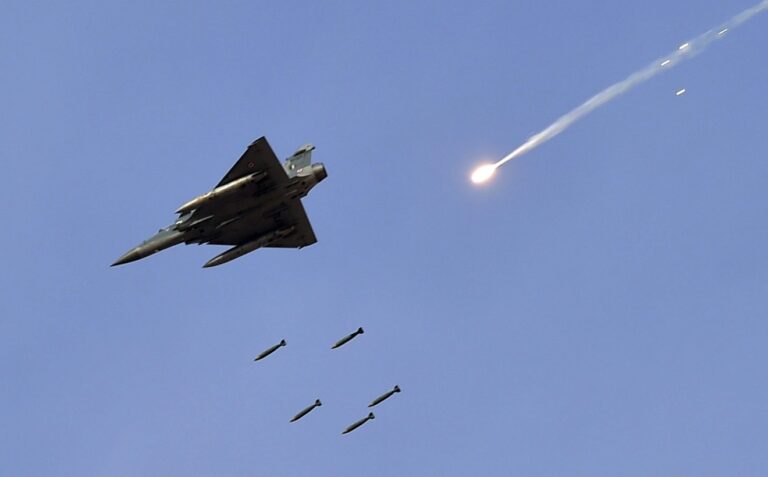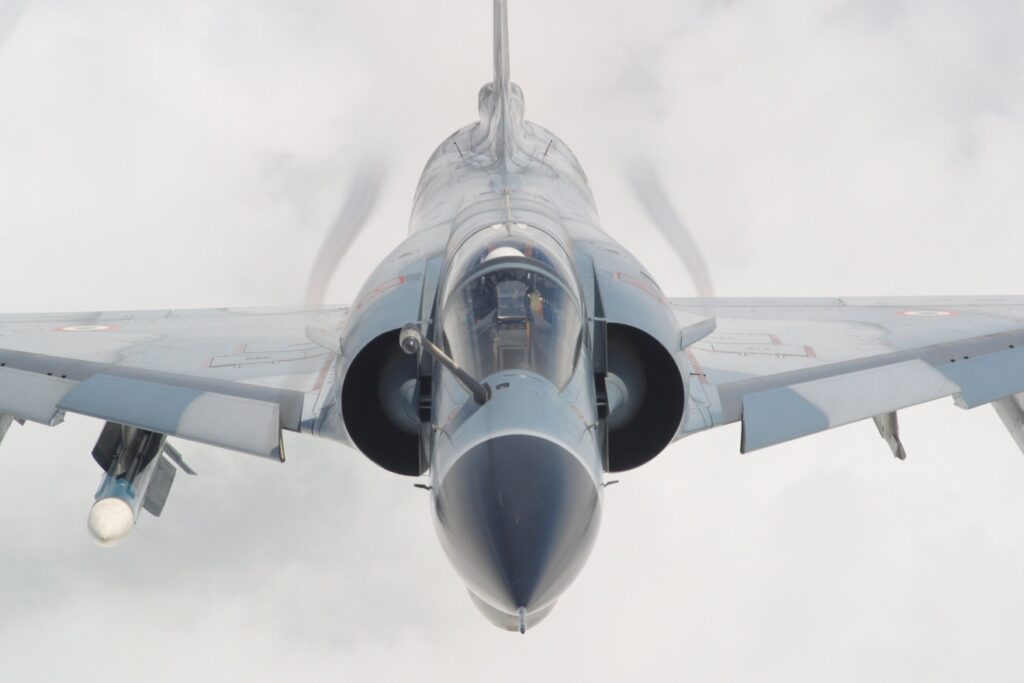Much Ado About Balakot and Beyond

(Published as The “Real Thing” in VAYU II/2019 as also at IDR Web Edition)
12 days after the terror attack in Pulwama on 14 th of February 2019, India decided that enough was enough and responded with air strikes at three JeM terrorist camps at Balakot, Muzaffarabad and Chilkoti. What was truly significant about these strikes was not the body count and confirmation on the number of terrorists actually killed but that, for the first time, India decided to not just cross the LoC but go into Pakistan, at Balakot in Khyber-Pakhtunwa, itself to carry out this particular strike. Even in Kargil, where clear aggression by the Pakistani military was established and so seen by the world, we fought with one hand tied behind our back with the Lakshman Rekha being the LoC. There’s can be little debate on the argument that if the LoC was not kept sacrosanct and the armed forces were given the liberty of attacking from the flanks or rear through an indirect approach, without any intent to occupy the rear areas, the casualties, both on the ground and in the air, would have been lesser for us and we would have evicted the Pakistanis from our posts, earlier than we did. Viewed in this context, along with the minor incursions across the LoC in past retaliatory actions, the true significance of the Balakot strike is the message the nation sent through the Air Force that we are capable and determined to strike at terror bases wherever they may be in Pakistan. Fortunately, there were no reported losses in these strikes in the wee hours of 26th February.
The Pakistanis also did not claim that they had intercepted or shot down any of our aircraft that took part in these raids. However, even if there were some losses, these would and should have been acceptable to the nation considering the importance of the message we were sending out to not just Pakistan but also the international community of our resolve to combat terror and the new strategy of retaliation. That there were no losses just proves the meticulous planning and training for such operations by the Indian Air Force, which made the entire nation proud.

I wouldn’t even want to go into the guesswork on or try to know which aircraft took part in these strikes nor where they took off from and how they conducted the planned strike, as many have found important to discuss and debate on TV channels for days at end. Personally, I want to commend the IAF for being reticent on the details since these things are not for public consumption no matter how much the temptation to get a bit of limelight. After all, even the minutest bit of information on the plans can adversely affect future operations of such nature.
In that light, for some to claim credit for having planned exactly such strikes a decade or more ago was also perhaps unnecessary. As a matter of fact, I would be disappointed if the current leadership of the IAF just dusted and used such old plans since with acquisition of new technology, knowledge, expertise as well current intelligence, operational plans must change and be innovative to surprise the enemy every time. Neither the IAF nor the foreign secretary who made the official announcement in the forenoon of 26th February mentioned which aircraft, how many or from where as also the weapons used and the exact or even the estimated casualties inflicted. I truly haven’t been able to figure out where our media picked up the details on Mirages, AAR and AWACS etc.
Despite such clear restraint on the part of the officials concerned, it is disturbing to see some making claims on the numbers killed and others asking for evidence of the strikes or even the exact number of casualties. Such detractors, whatever their compulsion, do not seem to understand the main objective of the strikes or the fact that in air actions, the number of casualties cannot be estimated with any degree of accuracy without having boots on the ground immediately thereafter, particularly when the enemy is in a denial mode and everything is going to be cleared or covered up post-haste. All that can be done is to project the numbers likely to have been in the target complex based on the latest intelligence. Also, it would be incorrect to even ask the Air Force to put out in public domain any imagery from the strike aircraft or other assets. For experts, even such imagery gives away the type of assets and attack pattern employed, the resolution of the imagery and many other bits, which can be used to deduce the capabilities and likely future employment of assets. In any event, such evidence on the strike having been carried out has already emerged slowly from unofficial sources.

Pakistan itself admitted the intrusion with some outrage, an audio of JeM warning of rebirth of Jehad has emerged and an Italian journalist, Francesca Marino, talked of extensive damage with 100% accuracy with eyewitness accounts of a death toll of between 40-50 with another 35-40 wounded. 1 Just this morning, YouTube had a video on the satellite imagery of the terrorist complex at Balakot before and after the strike. More details would surely emerge with passage of time. Even the IAF may put out some evidence after some time once this phase of operations is over and when the information is not considered sensitive. In the meantime, the political storm being created for evidence, without patience, may only end up demoralizing the war fighters. One can be certain of the senior leadership in the armed forces of taking suitable steps to ensure that the attention of the fighting elements is not distracted by such political controversies but this is certainly an unnecessary and wasteful drain on time and resources.

Immediately after the strikes, while the nation was celebrating, one can also be certain that the armed forces were already in a high state of alert for possible retaliatory action from across the border. After all, all the sound-bites coming from across talked of certain retaliation. Thus, the air intrusion by PAF the very next day shouldn’t have surprised anyone, least of all the Air Force. Without taking anything away from Wing Commander Abhinandan’s bravery, and his later conduct in captivity which we all salute, it is surprising that the Air Force decided to pit MiG-21s, perhaps mixed with some Su-30s as reported, against incoming F-16s. I was in charge of the MiG-21 upgrade to Bison standards from initial evaluation of proposals in 1993 till after contract conclusion in 1996 so I know exactly what the Bison is capable of in terms of its combat capability, including avionics and weaponry.
The MiG-21 Bison has also reportedly performed admirably against later generation aircraft in all international exercises it has taken part in. However, the airframe and engine of the Bison remain almost the same limiting its maneuverability and close combat capabilities against more agile aircraft like the F-16. Therefore, it was known that the Bison would not be able to hold its own against superior aircraft except when in a large and coordinated group where numbers overcome the shortfall in individual maneuverability. I only hope the reports of putting out 2 MiG-21Bisons and 4 Su- 30s against an expected/reported force of 10-12 intruders are incorrect and we did engage this raid with appropriate forces. An article in NY Times is already questioning our vintage hardware and our ability to face future challenges as a strategic partner of the US. 2 I am also hoping that the Air Force managed to get some immediate imagery of the F-16 crash site, reportedly just across the LOC before it was cleaned up, through various means available to it, instead of some bits on TV about a drop tank and engine casing.
I am certain it now has corroborating bits from the other members of the interception group because someday even this may be called into question. Despite the reportedly heartening performance of this old work-horse against an F-16 as reported in Business Today, 3 the claim would someday need to be substantiated by more than just conjectures. Even today, it would certainly strengthen our case of the misuse of the F-16s against US law and conditions of sale based on which we are trying to convince the US to act and support us in this fight against terror. Finally, I also hope the Air Force has internally examined this whole engagement to figure out why it couldn’t shoot down a large majority of the intruding force, if not all of them, in the very first aerial engagement between the two air forces after almost four decades. That would have sent an even more powerful message to Pakistan not to mess with us. We certainly had the assets to be able to do this.
Published on
VAYU AEROSPACE (Page 29 onwards)